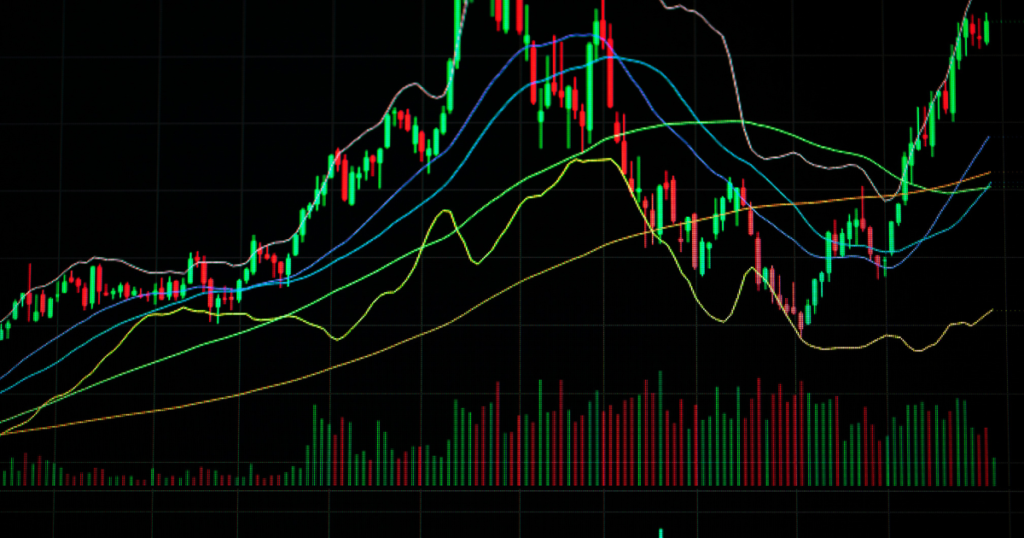FintechZoom.com Commodities provides in-depth analysis, real-time updates, and expert insights into the ever-changing world of commodities trading.
Whether you’re tracking gold, oil, natural gas, or agricultural products, staying informed is crucial for making smart investment decisions.
Commodities play a vital role in the global economy, with prices influenced by supply and demand, geopolitical events, and economic trends.
Investors often turn to commodities as a hedge against inflation and market volatility, making them a key part of a diversified portfolio.
From precious metals like gold and silver to energy sources like crude oil and natural gas, understanding price movements can help traders capitalize on market fluctuations.
At FintechZoom.com, you’ll find up-to-date market reports, price forecasts, and expert opinions to guide your trading strategies.
Whether you’re a seasoned investor or just starting in commodities trading, having access to reliable data and analysis can give you an edge.
With commodity prices constantly shifting due to economic and political factors, keeping an eye on the latest trends is essential.
FintechZoom.com Commodities ensures you never miss a critical update, helping you trade smarter and make informed financial decisions.
What Are Commodities? A Quick Overview

Commodities are raw materials or primary goods that are traded in global markets. They are essential in various industries, from energy and agriculture to precious metals and manufacturing.
Commodities are typically classified into two main categories:
Hard Commodities
These are natural resources that must be extracted or mined. Examples include:
- Precious Metals: Gold, silver, platinum, palladium
- Energy Commodities: Crude oil, natural gas, coal
- Industrial Metals: Copper, aluminum, zinc
Soft Commodities
These are agricultural products that are grown or harvested. Examples include:
- Grains: Wheat, corn, soybeans
- Livestock: Cattle, pork, poultry
- Beverage Crops: Coffee, cocoa, tea
- Other Agricultural Goods: Cotton, sugar
Why Are Commodities Important?
- Economic Indicators: Commodity prices reflect global economic conditions.
- Inflation Hedge: Many investors use commodities like gold to protect against inflation.
- Diversification: Adding commodities to a portfolio can reduce risk.
Commodities are traded through futures contracts, ETFs, and direct investments, offering multiple ways for traders to participate. Understanding these markets is key to making informed investment decisions.
Latest Commodity Market Trends & Updates

Commodity markets are constantly evolving due to economic shifts, geopolitical tensions, supply chain disruptions, and global demand fluctuations.
Here’s a look at the latest trends shaping the market:
Gold & Precious Metals: Safe Haven Investments Rise
- Gold prices have surged due to inflation concerns and geopolitical instability.
- Silver and platinum are gaining interest for their industrial applications, especially in green energy.
- Central banks continue to stockpile gold, signaling long-term bullish trends.
Oil & Energy: Volatility Amid Global Supply Shifts
- Crude oil prices are fluctuating due to OPEC+ production cuts and geopolitical conflicts.
- Natural gas demand remains strong, with rising consumption in Europe and Asia.
- Renewable energy commodities (like lithium and cobalt) are gaining traction as EV demand soars.
Agricultural Commodities: Weather & Trade Impact Prices
- Wheat and corn prices are reacting to extreme weather conditions and export bans.
- Coffee and cocoa prices are rising due to climate change affecting crop yields.
- The livestock market is experiencing supply chain challenges, influencing beef and pork prices.
What’s Next? Expert Predictions
- Analysts predict continued gold price strength amid economic uncertainty.
- Oil markets may remain volatile, depending on global supply agreements.
- Agricultural commodity prices could spike further due to unpredictable weather patterns.
Gold & Precious Metals: Investment Strategies
Gold and other precious metals like silver, platinum, and palladium have long been considered safe-haven assets for investors.
Whether you’re looking to hedge against inflation, diversify your portfolio, or take advantage of market trends, here are the best strategies to invest in precious metals:
Buy Physical Gold & Silver (Bullion & Coins)
- Best for long-term investors who want a tangible asset.
- Common forms: Gold bars, silver coins, and collectible numismatics.
- Consider storage costs and insurance for security.
Invest in Gold & Silver ETFs
- Exchange-traded funds (ETFs) track gold and silver prices without the need for physical storage.
- Examples: SPDR Gold Shares (GLD), iShares Silver Trust (SLV).
- Ideal for easy liquidity and passive investment.
Trade Gold Futures & Options
- Futures contracts allow you to speculate on future gold prices with leverage.
- High risk but offers significant profit potential for short-term traders.
- Requires experience in commodities trading.
Buy Gold Mining Stocks
- Investing in companies that mine gold and silver can offer higher returns than the metals themselves.
- Popular stocks: Barrick Gold (GOLD), Newmont Corporation (NEM).
- Stocks can be volatile but benefit from rising metal prices.
Consider Precious Metals IRAs
- A gold-backed IRA allows you to invest in metals while enjoying tax benefits.
- Good for retirement planning and long-term wealth preservation.
Final Thoughts: Diversify Your Metal Portfolio
A balanced approach, combining physical gold, ETFs, mining stocks, and futures, can maximize returns while reducing risks. Stay updated with market trends to adjust your strategy accordingly!
Oil & Energy Commodities: Price Fluctuations Explained

Oil and energy commodities, including crude oil, natural gas, coal, and renewable energy sources, are among the most volatile assets in global markets.
Prices can change significantly due to economic conditions, geopolitical events, and market speculation. Here are the key factors driving these fluctuations.
Supply and Demand Imbalance
When demand for energy is high and supply is limited, prices increase. Conversely, when supply exceeds demand, prices fall.
For example, the global economic recovery after the COVID-19 pandemic led to increased demand, driving oil prices higher.
In contrast, the 2020 oil price crash occurred when demand plummeted due to lockdowns and travel restrictions.
OPEC+ Decisions and Production Cuts
The Organization of the Petroleum Exporting Countries (OPEC) and its allies influence oil prices by controlling production levels.
When OPEC+ cuts output, supply tightens, leading to higher prices. If the group increases production, prices tend to decline due to greater availability in the market.
Geopolitical Tensions and Global Conflicts
Wars, political instability, and international sanctions can disrupt energy supplies, leading to price spikes.
Conflicts in oil-rich regions, such as the Middle East or the Russia-Ukraine war, have historically contributed to significant price fluctuations.
U.S. Dollar Strength and Inflation
Since oil is traded in U.S. dollars, a stronger dollar makes oil more expensive for countries using other currencies, often reducing global demand. Inflation also plays a role, as rising costs generally push energy prices higher.
Renewable Energy Growth and Policy Shifts
The expansion of renewable energy sources like solar and wind, along with government policies aimed at reducing reliance on fossil fuels, is reshaping the energy landscape. Over time, this transition may impact oil demand and pricing dynamics.
Future Outlook
Oil and energy prices remain unpredictable due to factors such as OPEC+ decisions, global economic trends, and geopolitical risks.
As renewable energy adoption grows, the long-term future of oil markets may shift, but short-term price volatility is likely to persist.
Staying informed on market developments is essential for investors and businesses navigating the energy sector.
FintechZoom’s Expert Analysis & Predictions
The commodities market is constantly evolving due to economic shifts, geopolitical events, and technological advancements.
FintechZoom provides expert insights into current market trends and future price movements across key commodities, including oil, gold, and agricultural products.
Oil Market Predictions
Oil prices remain highly volatile, influenced by OPEC+ production decisions, supply chain disruptions, and global energy demand.
Analysts anticipate continued fluctuations due to geopolitical tensions and the transition toward renewable energy. Short-term price spikes may occur if production cuts persist or conflicts escalate in oil-producing regions.
Gold and Precious Metals Outlook
Gold remains a preferred hedge against inflation and economic uncertainty. Recent market trends suggest that gold prices could rise as central banks continue to manage interest rate policies. Increased demand for silver, platinum, and palladium in the technology and automotive sectors may also drive price shifts.
Agricultural Commodities Trends
Supply chain disruptions, climate change, and global demand for food products play a crucial role in determining agricultural commodity prices.
Rising input costs and unpredictable weather patterns could lead to price surges in key crops such as wheat, corn, and soybeans.
Overall Market Expectations
FintechZoom experts predict that commodity markets will remain volatile, with significant price swings driven by macroeconomic factors, supply chain developments, and policy changes. Investors should stay informed and diversify their portfolios to manage risks effectively.

